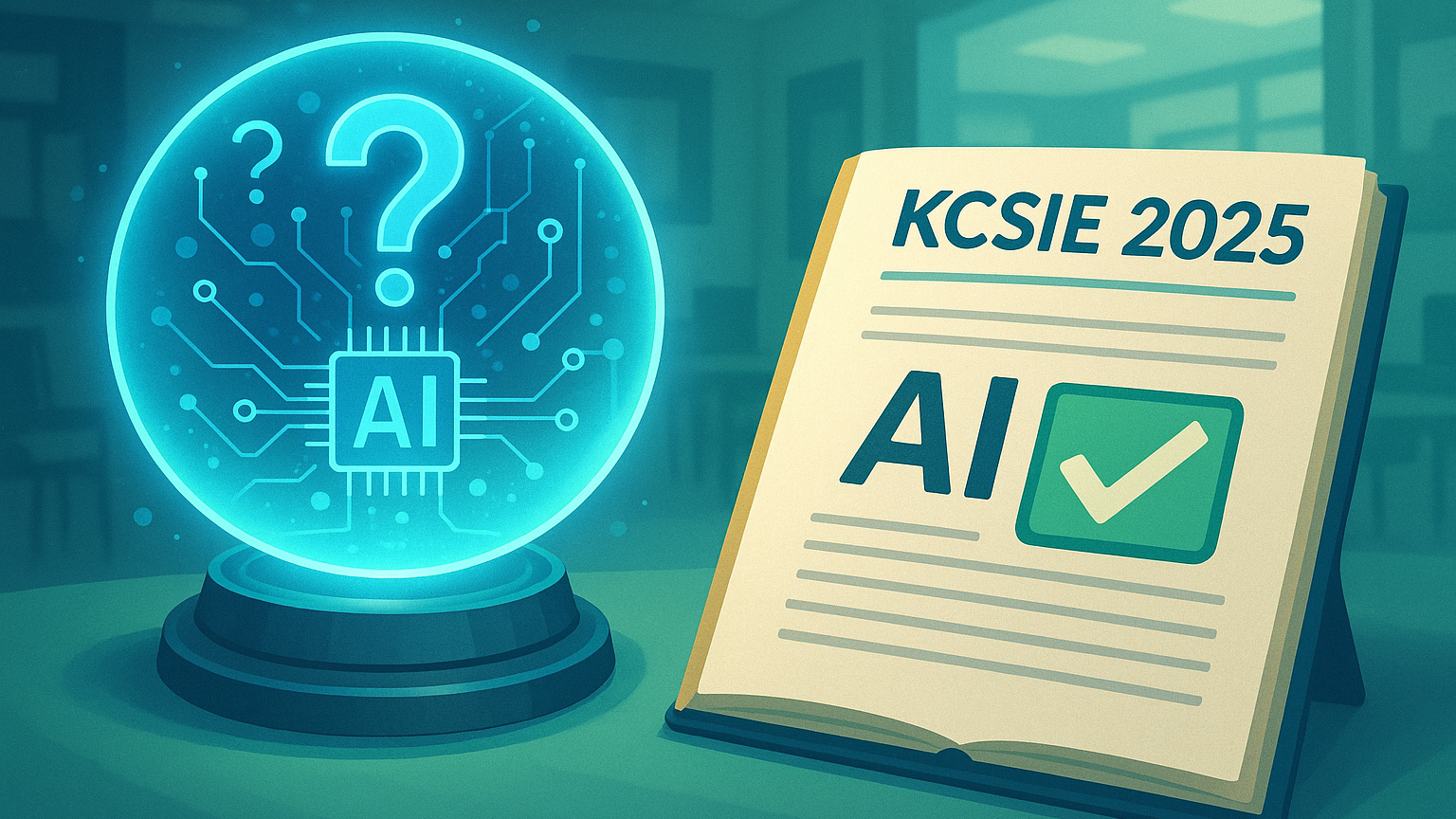KCSIE 2025: What We Got Right (and What We Didn’t) About AI and Safeguarding
When we published our forecast on how KCSIE 2025 might address Artificial Intelligence, we speculated that the Department for Education was poised to...
6 min read
 Mark Orchison
:
Jun 30, 2025 1:03:34 PM
Mark Orchison
:
Jun 30, 2025 1:03:34 PM

KCSIE is due to be published soon and, according to sources, is expected to undergo a significant upgrade, potentially even a complete rewrite. In this article, we explore our forecasted changes to KCSIE 2025 in relation to Artificial Intelligence. This forecast is just that, an informed speculation, drawing on recent updates from the Department for Education and Ofsted to guide our analysis.
In forecasting these changes, we believe that the aim will be to integrate AI considerations into the existing safeguarding framework rather than to craft an entirely new AI safeguarding framework. The fundamental safeguarding principles remain the same: ensuring children’s well-being, preventing harm, and reacting swiftly and appropriately to concerns. AI is essentially a new context or tool in which those principles must be applied. KCSIE 2025 will likely underscore that schools should neither ban AI outright nor embrace it naively, but rather adopt a balanced approach: leveraging AI’s benefits for education while exercising rigorous oversight and caution to manage its risks. Schools will be expected to evidence that balance.
In this article, I’ve referenced several 9ine products, specifically Vendor Management, Application, and the Academy LMS AI Pathway. These tools are designed to help schools understand not only the AI risks associated with EdTech, but also broader risks related to privacy, cybersecurity, and safeguarding. They already save schools hundreds of hours each year, offering everything from independent assessments of EdTech and template DPIAs to an online digital coach within the Application Library that supports teachers directly. Should KCSIE 2025 adopt the changes we’ve forecast, schools using our tools will have a significant head start in meeting their new responsibilities.
To find out more how we can help prepare your school for KCSIE 2025, get in touch.

When we published our forecast on how KCSIE 2025 might address Artificial Intelligence, we speculated that the Department for Education was poised to...

In 2025, schools in England face a convergence of new safeguarding requirements and data protection laws as artificial intelligence (AI) becomes...

June 2025 saw a change to the data protection landscape in the UK, with the Data (Use and Access) Bill becoming law, to update the UK GDPR and Data...